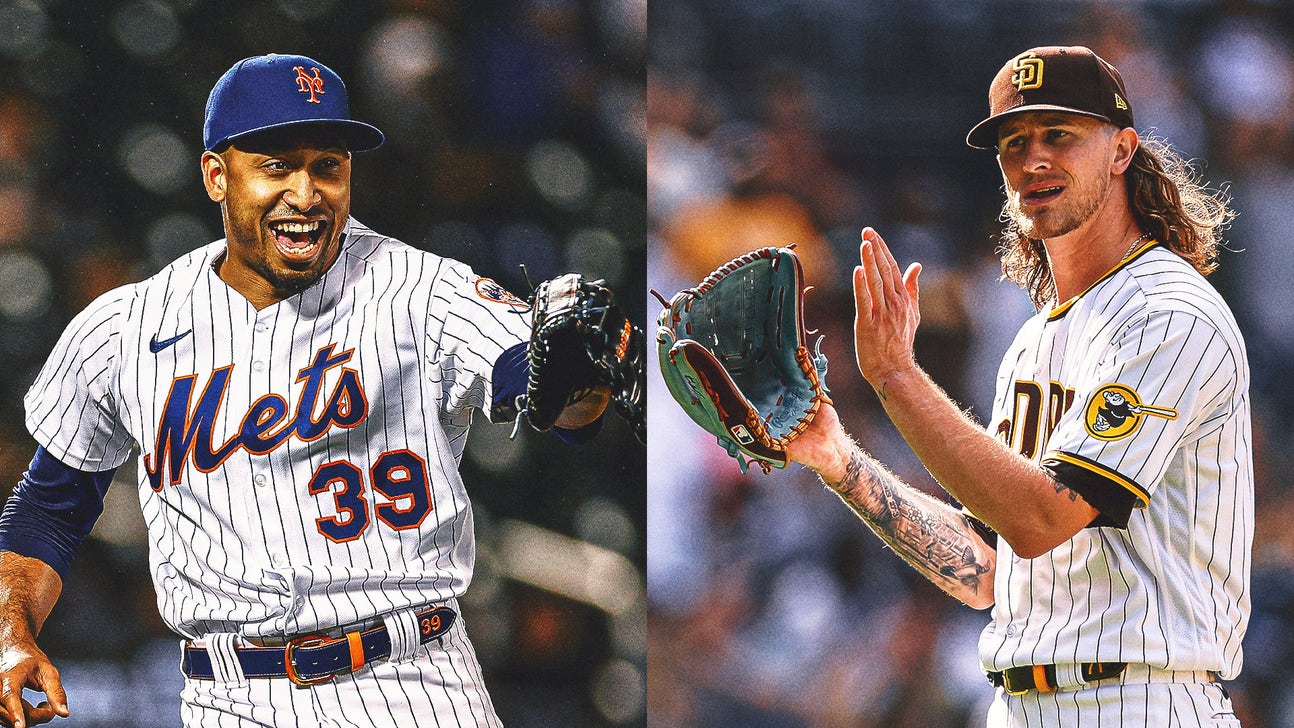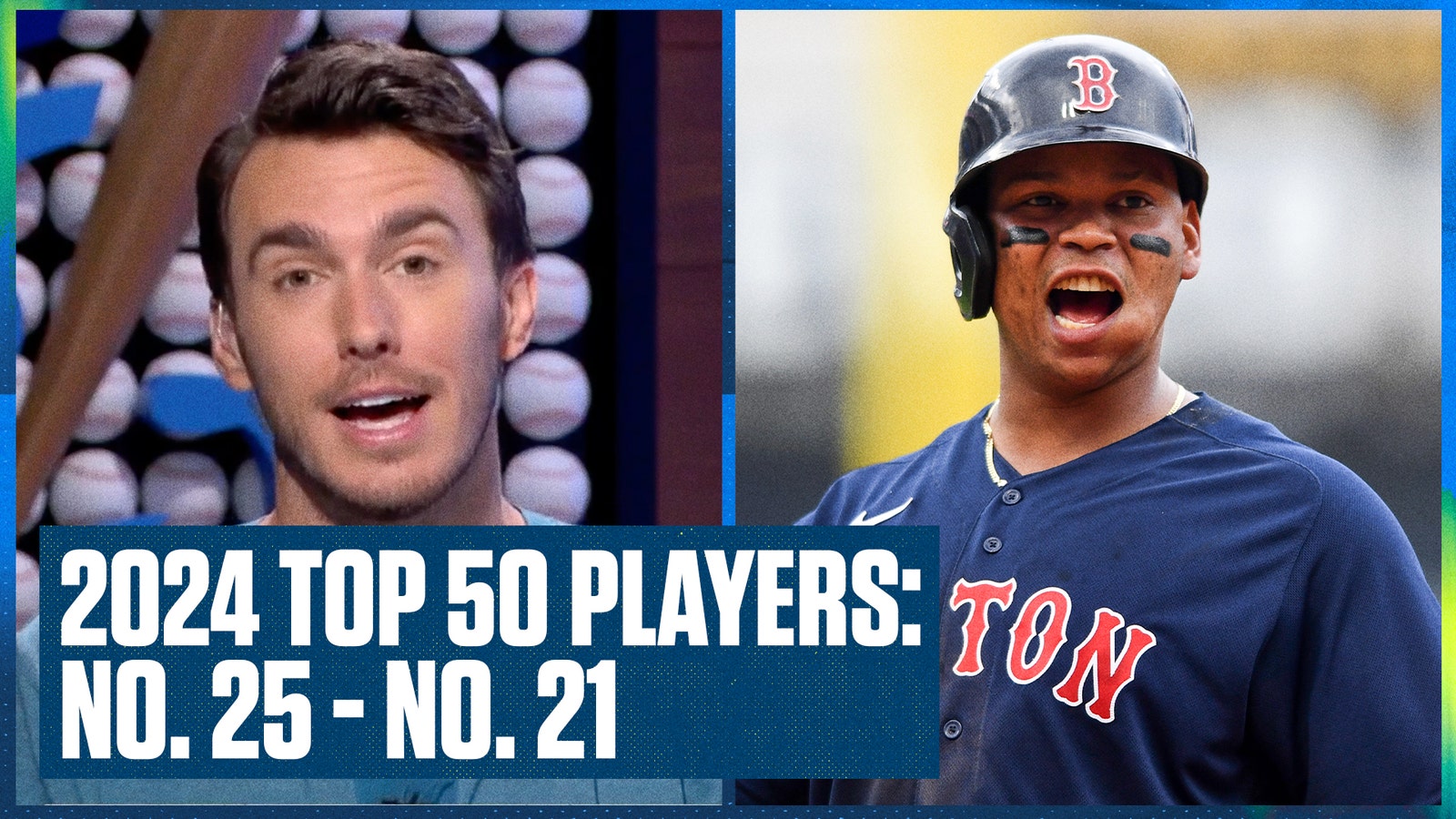
Should Josh Hader command more money than Edwin Díaz?
Josh Hader is about to get paid.
After another spectacular All-Star season, the long-locked lefty is now spelunking his way through free agency for the first time in his career. And it's no secret that the former Brewers and Padres closer is seeking to surpass Edwin Díaz's record for the largest contract ever given out to a relief pitcher.
Díaz, who electrified baseball in 2022 with a 1.31 ERA and 17.1 strikeouts per nine innings amid an avalanche of trumpets, earned a hefty five-year, $102 million contract last winter. He subsequently tore his ACL in a freak accident while celebrating a win in the World Baseball Classic and missed the entire 2023 season.
The offseason rumors surrounding Hader, who rebounded last year from a lackluster 2022, have been few and far between as spring training edges ever closer. By the time pitchers and catchers report next month, Hader will likely have found a suitor, but whether he'll have succeeded in overtaking Díaz as the highest-paid bullpen arm remains to be seen.
All of which begs two questions: (1) Should Hader get more than Díaz? (2) Will Hader get more than Díaz?

Beyond the surface level numbers, the two hurlers have had a relatively similar career trajectory. Both have been remarkably dominant aside from one major blip of a season. For Díaz, that was his first year with the Mets back in 2019 in which he posted a disastrous 5.59 ERA across 58 homer-prone innings. For Hader, it was 2022, during which he was traded from Milwaukee to San Diego after a lackluster first half and proceeded to stink up the farm even further in Southern California and ended the season with a 5.22 ERA.
It's also worth noting that Díaz entered free agency with something Hader does not: one of the richest men in the world on his side and oodles of cultural cachet. Mets owner Steve Cohen and his endless pockets of monopoly money, splashed that overwhelming landslide of dollar bills on Díaz's head before the Puerto Rican flamethrower even reached free agency.
Remember where the Mets were at one year ago, coming off a disappointing wild-card series loss to the Padres. Cohen and then-general manager Billy Eppler were predictably aggressive with their unlimited heaps of cash, spending big dough on retaining Brandon Nimmo and acquiring future Hall of Famer Justin Verlander. Then, around New Year's, they were poised to drop another few hundred million on Carlos Correa before a dodgy medical exam scuttled the deal in a dramatic saga.
But Díaz, who signed on Nov. 9th, 2022, just four days after the World Series ended, was step one in that spending spree. And understandably so, considering he was coming off a truly iconic season, one of the most memorable closer campaigns in MLB history. Every Díaz outing at Citi Field that summer was an event, as Timmy Trumpet's "Narcos" became the song of the summer in Queens. From May 27th until the end of the regular season, Díaz allowed just three earned runs across 43.1 innings (and 42 appearances) while striking out 84 batters.
That's about as magnificent as a platform year gets.
Top 50 MLB Players for 2024: Nos. 25-21
Hader, however, actually posted a lower ERA in 2023 (1.28) than Díaz did in 2022 (1.32). Yes, ERA doesn't capture a pitcher's full value, especially given how many things are outside their control. But that comparison succeeds in showing just how good Hader was this past season.
Even though Hader didn't touch Díaz's 2022 when it comes to punchouts, the soon-to-be 30-year-old still finished fifth in strikeout rate. Across 56.1 frames, he sent 36.8% of hitters wandering back to the bench with a big fat K. That bat-missing acumen, combined with Hader's league-leading .157 expected batting average against, is why he finished the season as one of the game's best ninth-inning arms.
The one huge knock against Hader's 2023 is his unyielding commitment to the base on balls. There were 162 qualified relievers last season and only 10 of them had a worse walk rate. He walked more than 13% of the batters he faced. That's too many! Somewhat impressively, his ERA was the fourth lowest of all time with a walk rate that poor.
You can look at Hader's control problems in one of two ways: The glass-half-empty view is that the sky-high walk rate could soon become a huge issue once Hader ages a bit and can no longer overcome that shortcoming by being world-class at inducing weak contact. The glass-half-full view is that Hader's 2023 walk rate was a career high. He's never been superb at limiting free passes, but his career levels are closer to 3.75 per nine than 4.75. If a team can get him back to "normal," there's no reason to worry about Hader's bizarre and somewhat lucky platform season.
The truth, as it always is, lies somewhere in between the two extremes. From a raw value perspective, I'd be wary of offering Hader such a massive deal considering the walk problems aren't likely to get better. But to win ballgames, you have to crumble rationality up into a ball and chuck it into the rubbish bin. Hader is the best left-handed reliever on earth and will make any team substantially better right away.
But I don't think there's a contender with a glaring enough need that his market develops enough to have the total dollar value surpass Díaz's. If we're being technical, Díaz's contract has a substantial amount of deferred money, which lowers the actual annual average value to $18.6 million and the actual total value to around $94 million.
Maybe that's within reach for Hader.
Jake Mintz, the louder half of @CespedesBBQ is a baseball writer for FOX Sports. He played college baseball, poorly at first, then very well, very briefly. Jake lives in New York City where he coaches Little League and rides his bike, sometimes at the same time. Follow him on Twitter at @Jake_Mintz.











